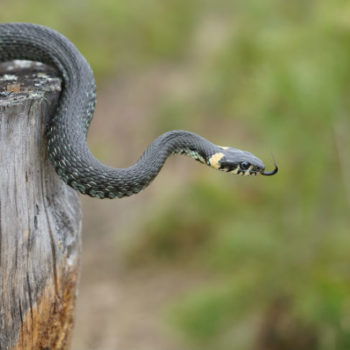
What is rabies and which animals are likely to have it?
- Posted by AdminBW
- On June 29, 2017
- 0 Comments
You’ve likely heard of rabies since you were a child and were told to steer clear of any animals that may have it. This, it turns out, is great advice. The disease, if left untreated, is virtually always fatal. It is called a “zoonotic” disease, which just means humans acquire it from contact with animals. Any mammal can be infected but certain species are more likely to have rabies and pass it to humans or their pets.
A Global Problem
Rabies has been around many thousands of years and is present on all continents (other than Antarctica). Traditionally, it was associated with dogs. This is likely because dogs were a gateway between the animal world and human society. If a dog was bitten while out in the woods, they often brought that infection into their owner’s home.
In fact, to this day it is estimated that domestic dogs cause about 95 percent of rabies infections in humans. In developed nations, aggressive vaccination programs have been put in place, often by law, which has caused this number to be much lower in places like the United States and Canada. In most of the developing world, though, dogs remain the main culprit.
Here in North Carolina
Critter Control sees many rabies cases every year here in the Raleigh-Durham area. Because domestic dogs have been well inoculated, the scares more often come from wild animals. The most common wild animals to avoid out of concern for rabies, especially if they are acting strangely, are:
- Raccoons
- Opossums
- Coyotes
- Foxes
- Bats
- Skunks
While it is assumed that rats and mice can pass rabies, rodents are very rarely the transmitting animal. They are carriers of many other diseases, though, so don’t be too friendly with wild rodents. Confronting a rabid animal, no matter the size, can be a frightening experience. Take this account from a young female jogger from Maine who was recently confronted by a violent rabid raccoon, who latched onto her thumb while on a run.
“I didn’t think I could strangle [the raccoon] with my bare hands,” she remembers thinking, but holding it under the water might do the trick.
Connecting the dots quickly, Borch, then on her knees, dragged the still biting raccoon, which was scratching frantically at her hand and arms, into the puddle.
“With my thumb in its mouth, I just pushed its head down into the muck,” Borch said.
With the animal belly-up, she held its head under water. “It was still struggling and clawing at my arms. It wouldn’t let go of my thumb,” she said.
Borch said she held it there for what felt like an eternity until finally it stopped struggling and “its arms sort of fell to the side, its chest still heaving really slowly.”
That’s right. The raccoon latched onto her thumb and she could only stop the attack by drowning it in a nearby puddle of mud. There are many such stories every year about erratic behavior from woodland creatures that would usually keep their distance. If an animal is acting aggressively or abnormally, get yourself and your pets away from it.
What to Do After Encountering a Rabid Animal
If you encounter a rabid animal, or one you suspect of being so, give Critter Control of the Triangle a call, immediately. Do not approach it or try to scare it off. Just leave the area and give us a call.
If you were bitten or scratched while encountering the animal, wash the wound thoroughly and go see a doctor as quickly as possible. Post exposure vaccinations for rabies are very effective and much less painful than they have been in the past.











